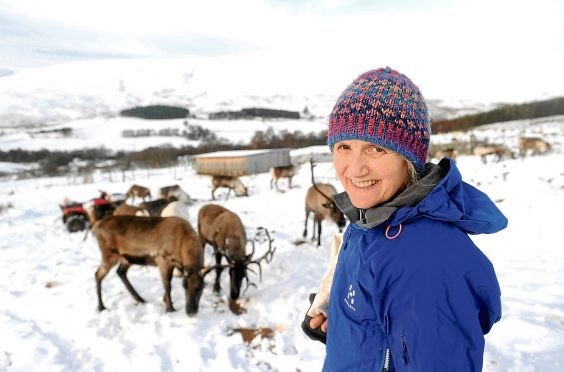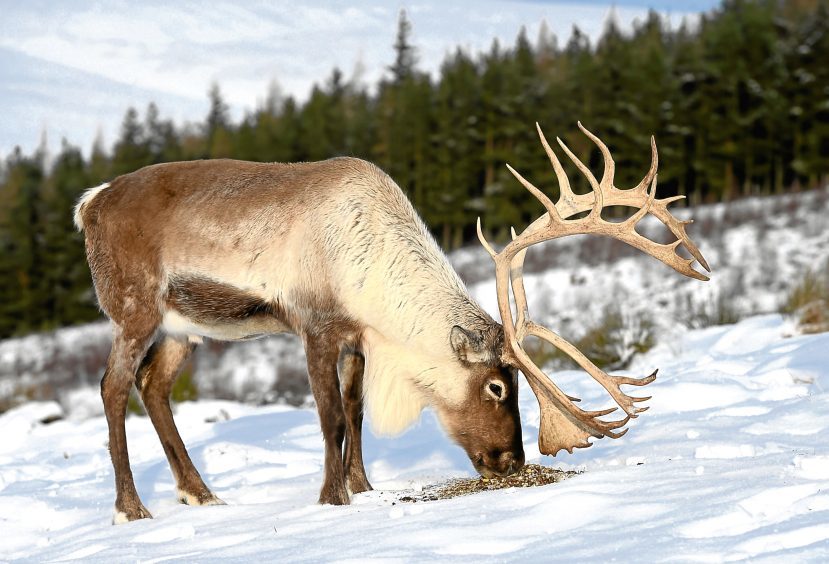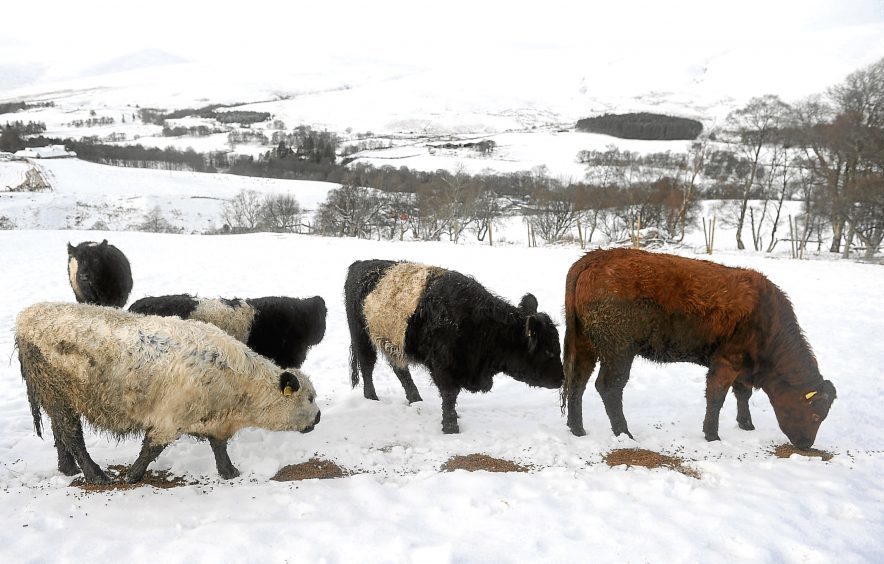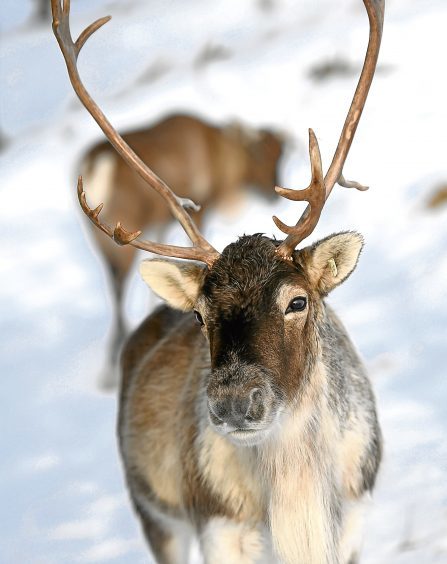They use quads rather than jingle bell sleighs to get around the wintery slopes of “Wild Farm” at Glenlivet.
In the circumstances it’s a little disappointing but hardly a surprise, because while the farming enterprise run by Alan and Tilly Smith may trade on nostalgia, romance and an extended season of Christmas wonder, this business is modern and totally switched-on.
The reindeer are the farm’s secret stars, hidden up on the hill at 1,500ft above the sloping fields of Belted Galloways, Soay sheep, Iron Age pigs and a growing herd of red deer hinds.
The quad ride to reach the surprisingly small reindeer is steep and slippery and the animals run towards us with a clumsy gait. Tilly Smith points out that it is their huge antlers – the biggest relative to body size of any deer – which make them appear tall.
The herd includes the 40 “working” Christmas reindeer, the castrated young males which are trained to pull Santa’s sleigh and be petted in town centre displays and shopping centres the length of Britain.
There are four of these full-antlered animals in each of the eight travelling teams, along with two spring-born calves which provide the “ahhh” factor.
The reindeer are on the road from the first weekend in November through until Christmas Day when they finish the season with a tour of hotels in Aviemore. The animals are then retired to the Cromdale hills where they are left for the rest of the winter to eat their preferred winter diet of lichen heath.
While the cattle, sheep and pigs get fed silage, hay or concentrates, the Smiths say the reindeer are the ultimate easy-care livestock. “We go up and feed them occasionally, mainly as a management tool, then in April they come off the Cromdales and are split between the farm here at Glenlivet and the slopes of Cairn Gorm where they’re part of the 1,000-acre enclosure, just above the snow line,” said Tilly.
The Smiths run around 150 reindeer in total, a mix of cows, bulls, castrated males and calves. Suitable land is in short supply so they restrict numbers by injecting the cows with contraceptives to stop them calving every year.
“It works well. It means the cows are in better condition and we can be responsible about the sustainability of the ground they’re on as we rely on the natural regeneration,” she Tilly.
Unusually for farmed livestock, none of the deer are slaughtered for meat. “It would be tricky to train them, give them names, tour them on the sleighs and have an adopt-a-reindeer scheme if we were going to then eat them,” she said.
“The old ones die on the hill and if they get sick they are put down.”
While the farm is the main base, the couple’s headline tourism business is run from the reindeer centre at the foot of the mountain. Interest in the animals has grown in recent seasons and they now attract almost 25,000 visitors a year, a number that is becoming almost unmanageable, leading them to consider limiting numbers in future.
Meanwhile the Smiths acknowledge that growing public disquiet over touring animals may one day mean the end of their Christmas enterprise, and while Tilly is well practised at countering criticism and justifying what they do with the reindeer, the business is gradually preparing for a waning of the Christmas work.
“Reindeer are domesticated animals, they have been for thousands of years, and yes, they’re adapted to the cold but we only go south at a cold time of year in November and December. They’re also trained and work as part of a team. They’re used to it and we have no problems with it,” Tilly said.
“Christmas used to be really important. It used to make up about 75% of our income, but that has been reduced to about half as the reindeer centre has become busier and the farm has built up.”
The 700 acres of mainly rough grazing and heather have been rented from the Crown Estate since the early 1990s, just a few years after the Smiths took over the running of the established Cairngorm herd.
As the reindeer only occupy the high ground, they introduced Iron Age pigs, Belted Galloways, Soay sheep and red deer to utilise the better grazing.
“All the livestock are part of our low-input, low output ethos – but it leaves a profit margin,” said Tilly. “The Belted Galloways are hardy and live all year on the hill with just some silage in winter. There’s a good market for breeding females, especially from people with disposable income. The Soays have also attracted good sales for breeding. They’re self-sufficient, shed their coats, never get foot rot – and are delicious to eat.”
The red deer herd is becoming a significant part of the enterprise with the entire farm now deer-fenced, largely financed by native woodland planting schemes which extend to around 100 acres. The herd comprises more than 200 breeding hinds which are contained on around 400 acres, and the main market is selling breeding hinds to stock the explosion of new deer farms across Scotland.
The whole business employs 11 people year-round and there are 20 seasonal workers in the run-up to December 25.
It is only late in the day, after the last hotels are visited, the final gifts dispensed from the sleighs and the reindeer retired to the hills for another year that the Smiths can finally sit down to enjoy their own family Christmas.



